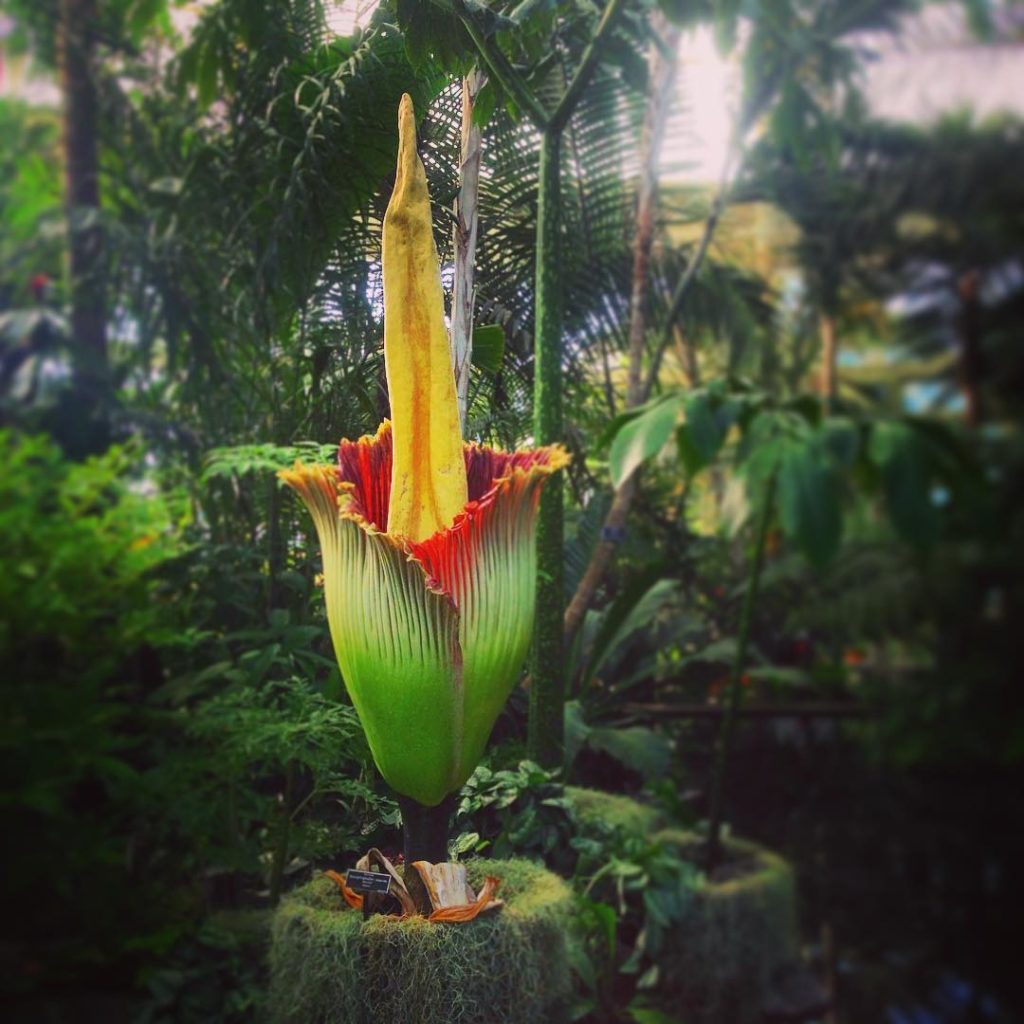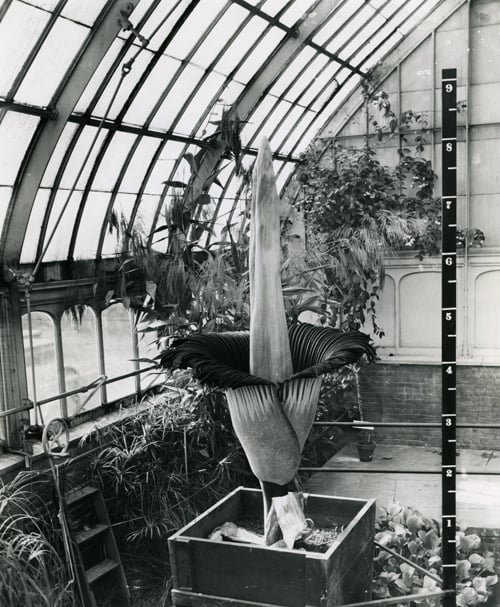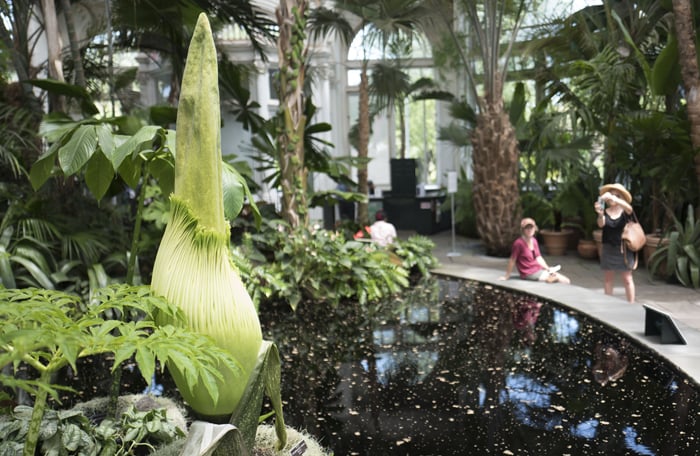Art & Exhibitions
Thousands Flock to New York Botanical Garden to Catch a Whiff of the Putrid Corpse Flower Blossom
New Yorkers lined up to catch a whiff of the flower's famously putrid stench.

New Yorkers lined up to catch a whiff of the flower's famously putrid stench.

Sarah Cascone

The hottest selfie spot in New York last week wasn’t some trendy pop-up museum or flashy public artwork. It was the ten-year-in-the-making flowering of the rare Amorphophallus titanum, a massive six-foot-tall bloom known for its distinctive, putrid smell, at the New York Botanical Garden.
Popularly-known as the corpse blossom (although the Latin name means “giant misshapen phallus”) for its less-than-pleasant fragrance, an Amorphophallus titanum last bloomed at the garden way back in 1939. The plant also blossomed there two years prior, in 1937, the first time the species had flowered in cultivation in the Western Hemisphere. In honor of the historic feat, the species was actually the Bronx’s official flower until the year 2000, when it was supplanted (no pun intended) by the daylily.
At first blush, the short-lived flower is undeniably exotic, a massive yellow spike protruding from large, green, petal-like leaf with a vibrant, blood-red interior. On average, the corpse flower grows to be five to six feet tall, although it’s been known to hit 12 in the wild.
The scent, wafting in the sticky heat of the conservatory, can only be described as putrid, rotten, and utterly disgusting—hence the appeal, perhaps.

The corpse flower blooming in 1937 at New York Botanical Garden. Courtesy of the LuEsther T. Mertz Library and the New York Botanical Garden.
“It’s the same organic chemical compounds that are present in rotting fish, rotting meat, human feces, and Limberger cheese, but it’s not rotting,” Marc Hachadourian, director of the Nolan Greenhouses, told artnet News at the conservatory on July 29, as thousands queued up, waiting for upwards of an hour in the summer heat for their chance to witness the rare horticultural event.
Garden staff first noticed the plant had formed a flower bud on July 15. The following Monday it was moved from the behind-the-scenes Nolan Greenhouses for Living Collections to the main Enid A. Haupt Conservatory, allowing visitors to witness the most dramatic part of the plant’s life cycle.
“We’ve been cultivating it at the greenhouses now for just shy of 10 years,” said Hachadourian. “This year, the first of the plants that we have has decided to grace us with its bloom, and as you can seen it’s drawn quite a crowd.” He described the corpse flower as a “wonderful piece of New York city history,” noting how fitting it was that the “pretty unique” plant was in bloom during the garden’s 125th anniversary year.
An undeniable part of the draw was that the corpse flower only blooms for 24 to 36 hours, with the bud first opening at around 2:30 p.m. on Thursday, July 28. “Even as we’ve seen since this morning, the flower is slowly starting to close, so it’s only a matter of time until it starts to wither away,” said Hachadourian around 5:00 p.m. on Friday.
“The reason why its such a short lived bloom is that it’s a tremendous expenditure of energy to produce it,” he explained, proudly noting that the flower had topped out six feet four inches tall. It won’t take quite as long for the specimen to flower again, but it could still be three to five years before its next bloom.

The corpse flower preparing to bloom at the New York Botanical Garden. Courtesy of the New York Botanical Garden.
The corpse flower’s famous scent and coloring is meant to attract potential pollinators like flies and beetles that are attracted to rotting flesh. The plant also undergoes a chemical reaction, heating up to better mimic decomposition. “For the purpose of the pollinator, this is rotting, dead, nasty meat,” said Hachadourian. “It’s essentially trickery. This is a big bait and switch scam.”
“I don’t think it knows it’s in New York versus its native western Sumatra, but the plant is blooming in the hopes of reproducing,” Hachadourian said. Outside of its natural environment, the garden was doing their best to make that happen and start producing the next generation of Amorphophallus titanum.
Staff were attempting to get pollen from another specimen currently blooming at a botanical garden in another part of the country, while also collecting pollen from their own plant. As Hachadourian put it, “I don’t know whether I’m going to be a mommy or a daddy.”
https://instagram.com/p/BIkNVVWjYuM/
The crowds at the garden aren’t the only ones captivated by the corpse flower, which has been widely referenced in pop culture. Its decade-long dormant period and brief flowering recalls, for instance, the Dennis the Menace movie, where Mr. Wilson’s rare orchid grows for forty years, only to blossom for mere seconds.
“It’s been a real thrill,” said Hachadourian of corpse flower’s blooming. He sees the hubbub over the corpse flower as a “celebration of everything we do here in terms of global plant biodiversity conservation, because, really, what we are is a living museum of plants.”